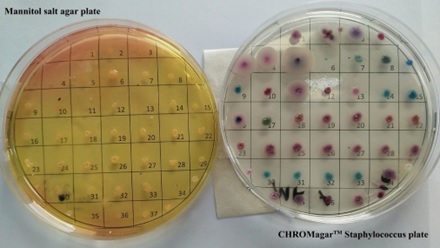Prevalence of multidrug resistance Staphylococcus aureus isolated from secondhand items in Dhaka, Bangladesh
Main Article Content
Abstract
Used clothing has been linked to the spread of disease from one buyer to another, posing a serious risk to the public health. In the current study, the used items were collected from three well-known marketplaces in Dhaka, Bangladesh. The objective was to isolate and identify Staphylococcus aureus, including Methicillin-resistant Staphylococcus aureus (MRSA) and Methicillin-sensitive Staphylococcus aureus (MSSA), using culture-based and molecular techniques. Ninety-nine used items of fifteen distinct kinds were purchased from vendors. All analyzed samples had a prevalence of S. aureus, 22/90 (24.4%), with the highest load in men's sweaters (9.3×103 cfu/ml) and the lowest load in women's jackets (5.0×101 cfu/ml), according to colonial appearance on mannitol salt agar and CHROMagarTM Staphylococcus culture plates. In all, 22 isolates were selected for further molecular analysis. Of the 22 presumptive S. aureus isolates that were recovered from the current investigation, 20 isolates with the nuc gene were identified as S. aureus species, among them 6 isolates with the mecA gene were identified as MRSA. Based on the data acquired on antimicrobial susceptibility, the majority of MSSA isolates (71.43%) and all MRSA isolates (100%) were determined to be multidrug resistant (MDR) with a MARI value between 0.2 and 0.5. In situations when utilizing secondhand products cannot be completely avoided, it has become clear that these items should be well cleaned before use since they may harbor bacteria that cause skin and other illnesses.
Article Details

This work is licensed under a Creative Commons Attribution 4.0 International License.
